The Template:
I have played a little guitar since I was 12, but really got into bass guitar only about 5 years ago. A friend that teaches bass lent me an old 4 string Dolphin bass guitar so I could start learning. [Dolphin is a Brazilian company that used to make instruments and related parts back in the 80s. I'm guessing they still exist, but they never had a website or any kind of online presence that I could find. They were never actually famous for great instruments, but they did have a few really good projects across the years.] It's not actually the one on the photo, but that's the closest one I could find on internet.
I do not understand that much about instruments and brands but someone who does told me this bass was one of these occasional good instruments from Dolphin. It was some kind of precision bass body and neck, with a Jazz Bass circuit, and some weird resin-wrapped pickups that none of us has seen in any other instrument. I, however, decided to modify it somehow as a hobby project with a friend and colleague that knows way more about audio electronics than me, automation engineer Arthur Dias.
Anyway, I guess you can use any bass guitar if you want to try the same thing.
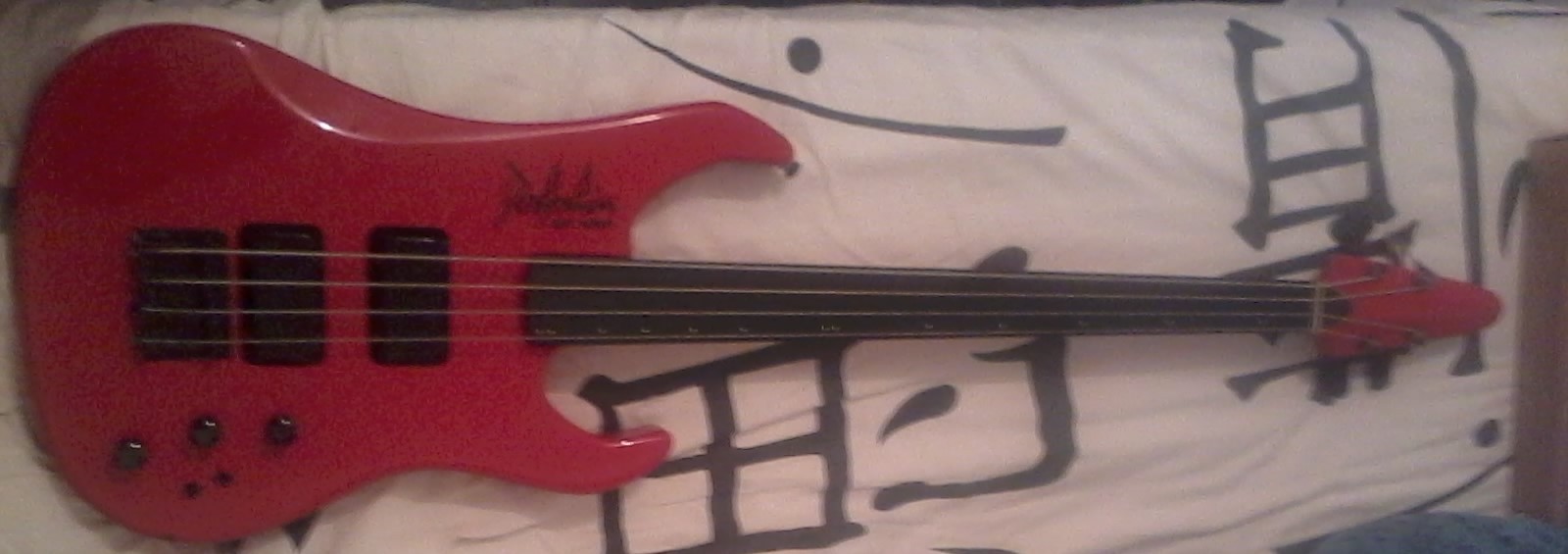
The Idea:
One curiosity I always had was about how much the mechanics of the instrument affects the sound. The specific aspect that I wanted to experiment on this time was the pickup position in relation to the bridge or the neck, so I came up with the idea of making the pickup move along two rods in a way that I could choose its position anytime I wanted. My biggest work experience so far is with 3D printers and 3D printing (since 2014 I co-authored two full 3D printer projects, assembled and fixed dozens of machines and taught maintenance to almost a hundred students), so I had the materials and tools laying around to try what I wanted.
Meanwhile, Arthur had some ideas about the circuit. Since my idea was making the pickup have multiple possible positions, he thought we should go for maximum versatility then. He suggested we projected and made the circuitry from scratch, with a 3-position switch that lets you choose between different circuit topologies, another 3-position switch to choose between different types of capacitors, one that turns on/off a treble bleed setup, and maybe another one that would turn on/off an internal active effect, like a pedal effect. All of that was beyond my knowledge but I loved everything he suggested so I was up to try it.
The Mobile Pickup:
So I basically used my knowledge in designing 3D FDM machines to try this. I designed a system that uses two 8mm stainless steel rods and lm8uu linear bearings, the same setup my 3D printers use. The pickup would be screwed to a piece that has two parallel linear bearings which would move along the rod's axis. The parts where the rods are fixed to, are assembled using four springs and screws to the biggest enclosure. That way I can adjust the distance between the pickup and the strings anyway I want and also adjust the axis slope so the rods would be parallel.
After a few tries using Fusion 360 I came up with the concept you see in the photos, then I 3D printed the parts in PLA.
Of course, I had to cut a hole in the bass body so I could fit all this in. And that was when things started to get a little messy. I have a few electric tools for woodworking, but until then, I have zero experience. Beware friends, a wood router is not as easy to use as it seems lol. After a few tries, we realized that the only way the pickup and the whole bearing/rods system would fit under the strings would be making the cut all the way through the body. So I did it, and it was not pretty haha. I could only manage to cut a deformed, not straight, and full of failures rectangle that not even a lot of sanding was able to completely fix. But I went through it anyway and convinced myself that I could hide at least some of the failures with the 3D printed...
Read more » Breno Juliano "Dot"
Breno Juliano "Dot"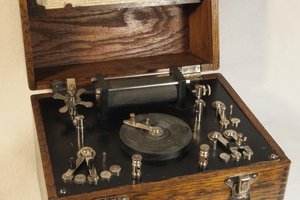
 Boris van Galvin
Boris van Galvin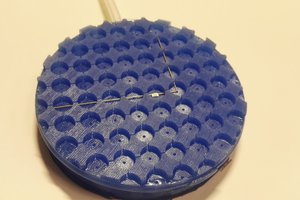
 Inne
Inne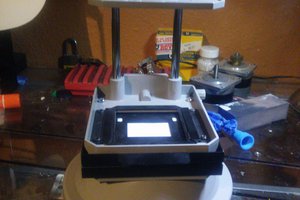
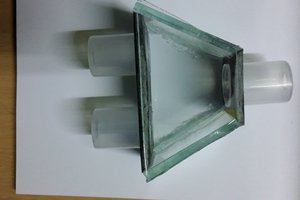
 Wriju
Wriju